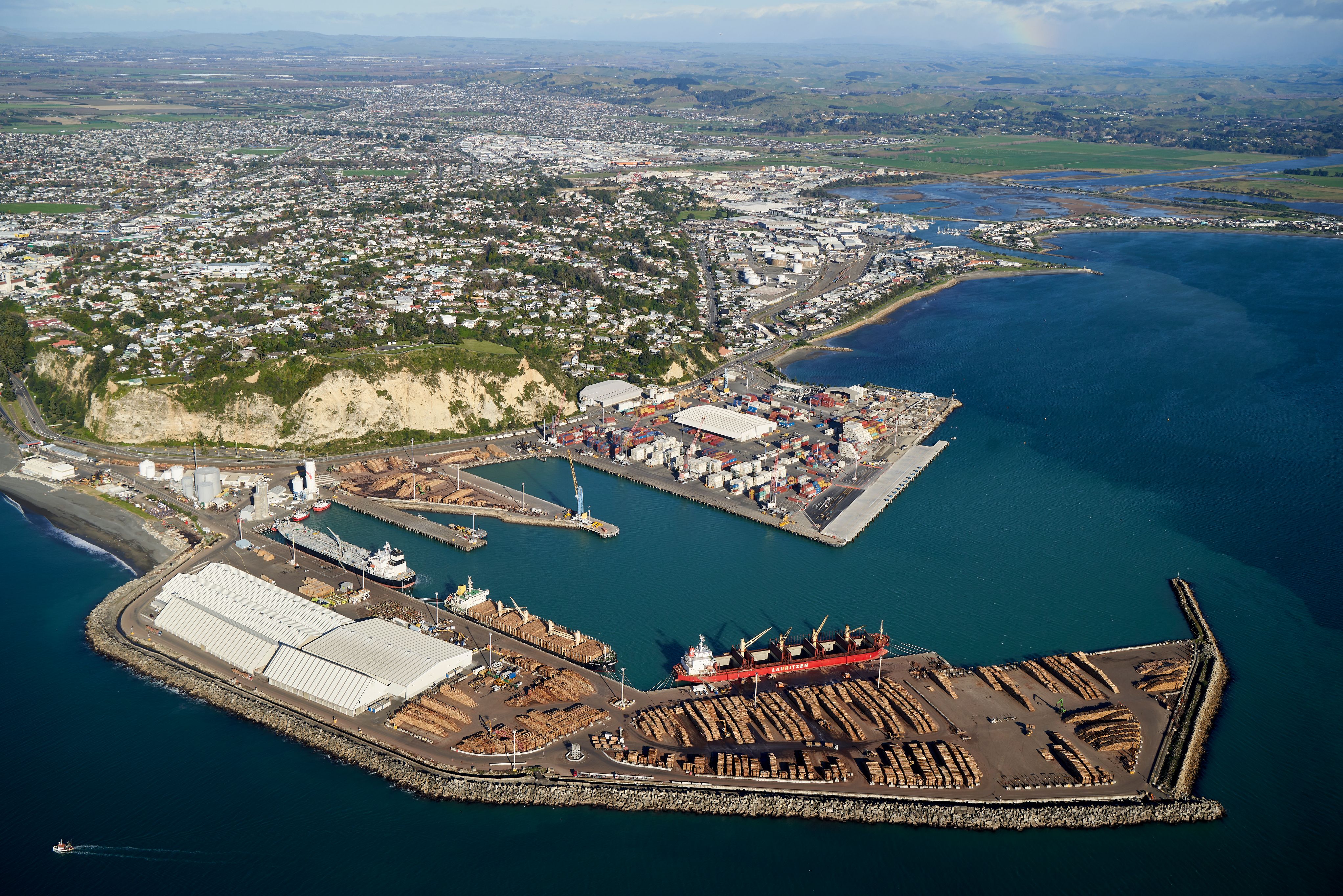Napier Port partners with Hiringa Energy to explore green hydrogen solutions and help drive decarbonisation goals
Last week, Napier Port (NZX.NPH) signed a memorandum of understanding (MOU) with New Zealand zero emissions hydrogen specialists Hiringa Energy to investigate renewable energy initiatives involving the use of green hydrogen. The project is focused on understanding the current and future opportunity for hydrogen to decarbonise Napier Port’s operations and logistics, as well as those of its tenants, port users and its customers across the wider region.
Napier Port CEO Todd Dawson was excited to join with Hiringa Energy and benefit from their world-leading hydrogen expertise, and believes the port is strategically placed to enable emissions reduction both on port and across the wider transport network and supply chain.
“Napier Port has committed to net zero emissions by 2050 and as set out in our sustainability strategy we are developing an emissions reduction strategy to support this goal. Green hydrogen, or hydrogen produced with renewable energy, represents one promising decarbonisation pathway for our 24/7 operations and heavy equipment diesel fleet. We will likely need a mix of electric and other alternative fuel solutions to decarbonise, with hydrogen providing for fast refuelling, a greater range than electric batteries, and the potential to be produced and stored on port. We’re already exploring what hydrogen-powered equipment alternatives are on the horizon, whether that be trucks and forklifts or potentially marine fleet solutions such as tugs.” said Dawson.
The key priorities of the port’s partnership with Hiringa Energy are to determine the feasibility of high-capacity green hydrogen production and refuelling capabilities on port and support the potential for renewable energy generation to electrify port operations.
Dawson continued, “Given our strategic location – linked to national road and rail networks and a series of growing inland ports, and our cargo handling capacity, Napier Port is a key connection in the North Island supply chain. We continue to champion an efficient, cost-effective and sustainable national network that will in turn support sustainable growth across New Zealand. Renewable energy has an essential role to play and we want to use our position to influence others and help drive progress both inside and outside our port gates.”

Aerial view of Napier Port. Photo/Supplied.
Hiringa Energy Project Development Lead, Dion Cowley recognises the benefits of building a relationship with a key stakeholder in the supply chain network.
“Hiringa Energy is a full-service green hydrogen provider from start to finish with expertise in building hydrogen production, distribution and high capacity refuelling infrastructure across New Zealand. We are excited to partner with Napier Port to understand the potential this zero emission energy solution holds for their business and its sustainable goals,” said Cowley.
“Hydrogen is already playing a significant role in unlocking the massive potential of the world’s renewable sector and we are committed to working with forward thinking partners like Napier Port to build the infrastructure that will support a reliable supply network here in New Zealand and help drive adoption of this clean and safe fuel,” added Cowley.
In addition to its new partnership with Hiringa Energy, Napier Port also recently marked its first external audit of its emissions inventory by Toitū Envirocare. Napier Port General Manager Assets and Infrastructure Michel de Vos, the port’s emissions reduction strategy project lead, was pleased to see this certification completed in the 2022 financial year.
“This independent certification will help to establish a baseline from which the port can now set emissions reduction targets and measure progress against. We look forward to progressing the development of our emissions reduction strategy in the year ahead, understanding that a mix of renewable energy solutions will be required on the pathway to our 2050 net zero emissions goal,” said de Vos.




























